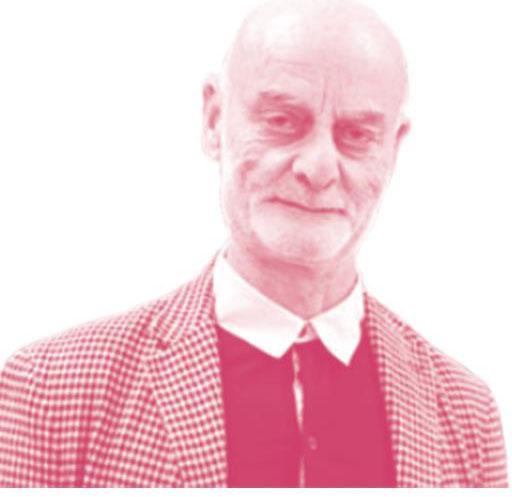瑞士艺术收藏家助力中国当代艺术走向世界
坦纳·塔费尔斯基

In 2019, after a three-year delay, M+, Hong Kongs museum dedicated to Chinese visual culture, opened to the public. It contains a staggering1 collection of art with works by Ai Weiwei, Cao Fei, Zhang Xiaogang, Liu Wei, Wang Guangle, Wang Guangyi, Song Dong, Hai Bo, and more. The former Executive Director, Lars Nittve, sees M+ as the equivalent of New Yorks MoMA or the Centre Pompidou in Paris, in terms of depth and cultural importance.
M+ wouldnt have been possible without Swiss businessman and art collector Uli Sigg, who in 2012 donated and sold 1,510 Chinese contemporary works of art (a portion of his collection) to the museum. Michael Schindhelms 2016 documentary portrait, The Chinese Lives of Uli Sigg, recaps2 Siggs life and how he accumulated his collection—from Social Realism to Cynical Realism and political Pop artworks—to preserve contemporary Chinese art for three decades. In interviews and reiterated3 in the film, Sigg prefers to view himself as “a researcher of China and of Chinese contemporary art who just happened to buy some of the results of his research.”
Segmented into parts, Chinese Lives follows Siggs life in chronological order, starting in 1979, the year that he first went to China as a representative of the Swiss elevator manufacturer, the Schindler Group, which ultimately led to the first joint venture between a Western company and China. The film moves fast at first, giving the impression that the periods covered in the 1970s and 80s are mere backstory. In the 90s, the doc slows down to a steady rhythm, and it is here where Siggs presence in the film returns, as it is the decade when he feverishly4 began to acquire art.
In 1995 Sigg became the Swiss Ambassador to China, which lasted until 1999. He was buying art with an objective eye, one towards preserving culture, and he often possessed pieces that went against his personal taste. Moving into the 21st century, Chinese art reached international attention in no small part to Siggs efforts. He created the Chinese Contemporary Art Award (CCAA), an award that functioned to get artists noticed by important Western curators and gallery owners. At the same time, pieces by Zhang Xiaogang, Yue Minjun, and others were fetching for millions of dollars. And yet Chinese Lives glosses over5 the link between commerce and art that leads to these astronomical6 prices, and merely notes that these artists were becoming further influenced by Western culture. The downside is that this globalization threatens to erase the specificity of Chinese culture.
Following Siggs announcement that he will donate a sizable portion of his collection to the soon-to-be-opened M+ museum, Chinese Lives ends on a hopeful note for the still-growing art scene in China. Chinese Lives is a standard, conventional documentary filled with interviews with Sigg himself, his wife, Schindler Group colleagues, Wang Guangyi, Cao Chongen, among others.
The documentary is a good starting point to familiarize oneself with contemporary Chinese art and the man who helped expose it to the world.
M+是位于香港的一家中国视觉文化博物馆,在经历了三年的延期之后,于2019年面向公众开放。该馆艺术藏品数量惊人,包罗了艾未未、曹斐、张晓刚、刘炜、王光乐、王广义、宋冬、海波等诸多艺术家的作品。M+前行政总监李立伟认为该馆的内蕴深度与文化意义堪比纽约现代艺术博物馆或巴黎蓬皮杜中心。
M+能有如此宏大的规模,瑞士商业家、艺术收藏家乌里·希克厥功至伟。2012年,希克将1510件中国当代艺术作品(他个人藏品的一部分)捐赠、售卖给了该博物馆。2016年迈克尔·辛德赫尔姆的纪录片《乌里·希克的中國人生》回顾了希克的一生及其艺术作品收藏之旅。从社会现实主义到玩世现实主义、政治波普,希克保存了中国当代艺术30年的作品。在多次采访中,希克都提到,他倾向于将自己视作“一名中国与中国当代艺术的研究者,凑巧购买了自己的某些研究成果”。在这部纪录片中他重申了这一点。
纪录片按时间顺序分段讲述了希克的生活,讲述始于1979年,那一年他作为瑞士电梯制造商迅达集团的代表初次来到中国,该集团最终成为了首批中西合资企业中的一员。起初电影快速推进, 让人觉得20 世纪七八十年代的几个阶段仅仅是故事背景。而到了20 世纪90 年代,影片节奏放缓,稳定下来,这时希克又出镜了,正是在这十年间希克开启了他狂热的艺术收藏之旅。
1995年希克成为瑞士驻华大使,直至1999年卸任。他一直以客观的文化保护的眼光来购买艺术品,经常会收藏一些与他个人品味相悖的作品。进入21世纪,中国艺术获得国际关注,希克功不可没。他创立了中国当代艺术奖,旨在让西方权威的策展人与画廊老板关注到中国的艺术家。与此同时,张晓刚、岳敏君等艺术家的作品售价高达数百万美金。然而该片淡化了造成这些天价的商业与艺术之间的联系,只说这些艺术家正进一步受到西方文化影响。其弊端在于这种全球化可能会抹除中国文化的特色。
片中希克宣布他会将大量个人藏品捐给即将开业的M+博物馆,之后影片便以中国艺术蓬勃发展这种满怀希望的基调落下帷幕。这是一部标准的传统纪录片,里面有各式各样的人物采访,采访对象包括希克本人、其妻子、迅达集团的同事、王广义、曹崇恩等。
这部纪录片是了解中国当代艺术和将其推向世界之人的一个好起点。
(译者为“《英语世界》杯”翻译大赛获奖者)

